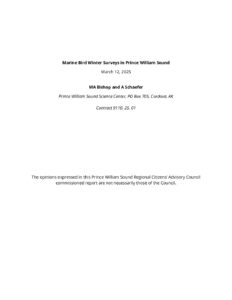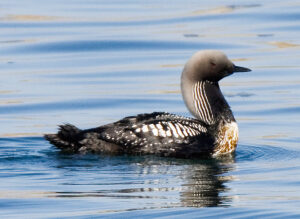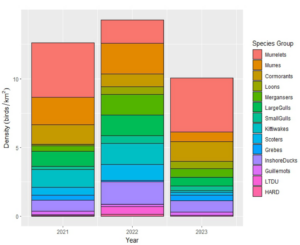In September and November 2024, staff from PWSSC conducted surveys of marine birds in and around the Prince William Sound’s tanker escort zone and the VMT. Highlights from the surveys include:
- The densest populations were found in Port Valdez and Hinchinbrook Entrance during both September and November.
- In September, the population was dominated by kittiwakes (over 60%), including over 3000 nesting pairs in Port Valdez.
- Fewer birds were encountered in November, and the species shifted dramatically. Cormorants, deep ducks, and inshore ducks were the most common species.
Their report summarizes the survey’s findings and recommendations for continued monitoring.


